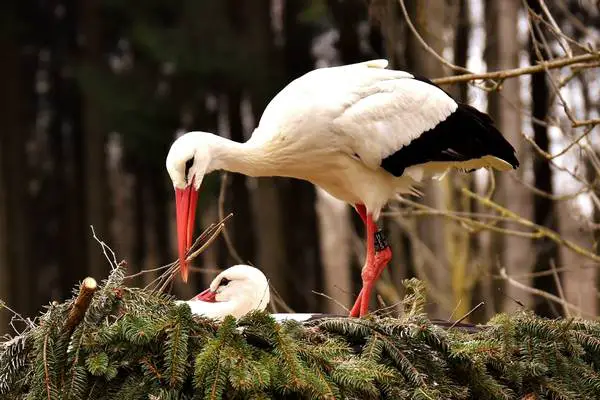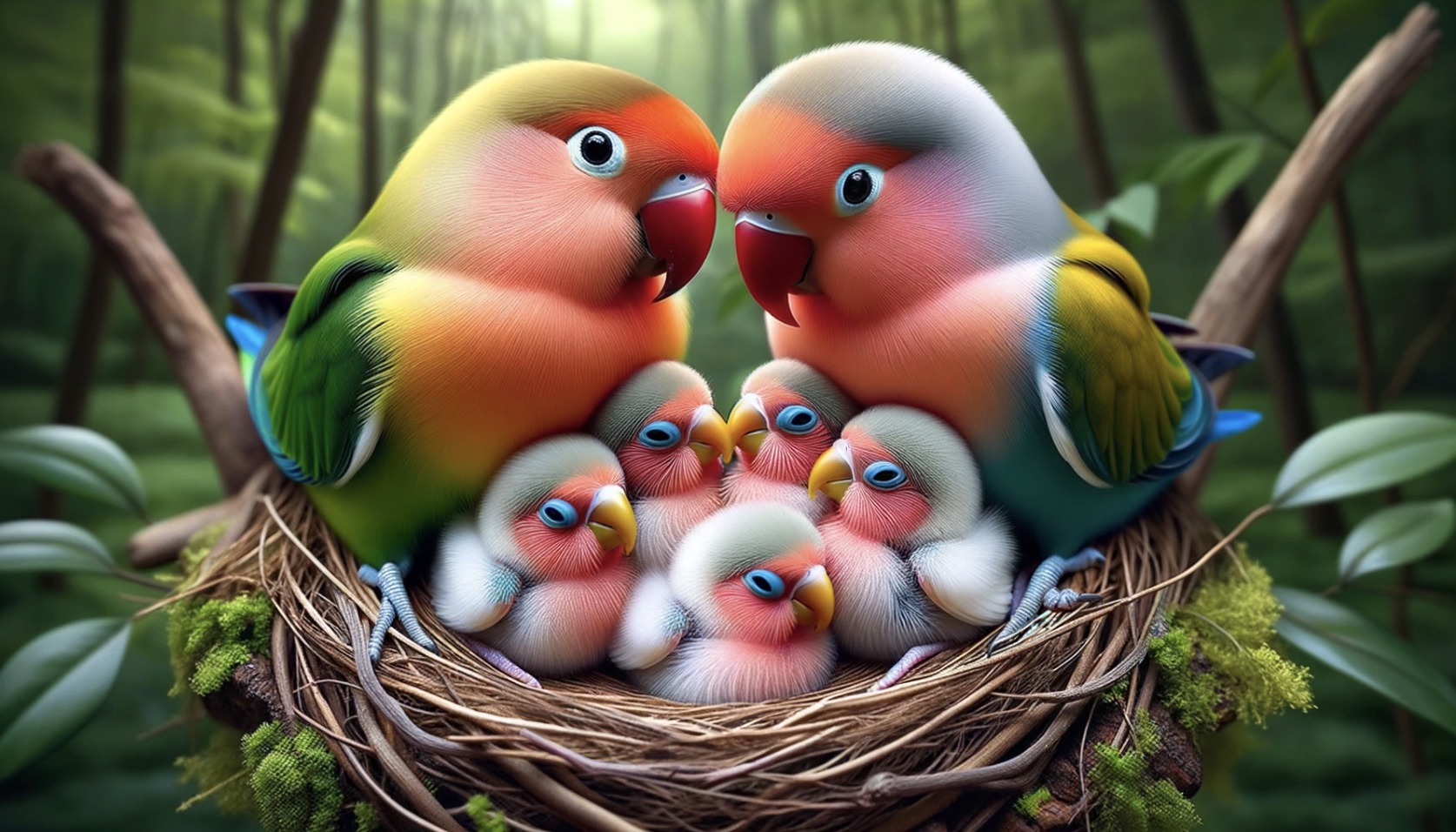Introduction: Lovebirds, with their vibrant colors and playful nature, are among the most popular pet birds worldwide. Their social interactions and nesting behaviors have fascinated many avian enthusiasts and biologists alike.
However, a question that often arises and concerns many is: Do lovebirds kill their babies? The short answer is that, occasionally, lovebird parents may harm or neglect their offspring, but this behavior is multi-faceted and rooted in evolutionary strategies.
In the wild, it’s estimated that around 5-10% of lovebird couples may exhibit behaviors leading to the death of their chicks every year. Let’s delve deeper into understanding why this happens.
Contents
Lovebird Parenting Behavior
Lovebirds, like many other birds, have a strong natural instinct to ensure the survival of their genes. Their parenting behavior revolves around maximizing the chances of their offspring’s survival, even if this means making seemingly cruel decisions.

In nature, survival often involves complex strategies which, to human observers, may appear harsh or counterintuitive. Food scarcity, the presence of predators, and various environmental factors play pivotal roles in shaping these instincts.
Brood Reduction to Prevent Starvation
How Lovebirds Prioritize Chicks’ Survival
In the wild, food availability is not always predictable. During times of scarcity, lovebirds face the grim challenge of feeding multiple hungry chicks. To ensure that at least some chicks survive, lovebirds might prioritize feeding the stronger, more robust chicks, while neglecting the weaker ones.

This strategy, known as brood reduction, can be heart-wrenching to observe but increases the odds that some chicks survive to adulthood. Over evolutionary time, the survival of some offspring is better than the potential death of all due to starvation.
Similar Behaviors in Other Bird Species
This behavior is not exclusive to lovebirds. Many bird species have developed brood reduction as an evolutionary strategy. For instance, raptors, such as eagles and hawks, often lay more eggs than they can feasibly rear, leading to the same dynamics where stronger chicks are prioritized over weaker ones.
Preventing the Spread of Infection
Identifying Weak or Sick Offspring
The wild is an unforgiving place, and disease can swiftly decimate an entire brood. Lovebird parents have evolved to recognize signs of sickness in their chicks. A sick chick can jeopardize the health of its siblings.
Consequently, lovebird parents might opt to remove or even kill a chick that shows signs of illness, preventing potential spread and protecting the remaining healthy chicks.
Protection of the Healthy Brood
This behavior, again, may seem brutal to human observers. However, from an evolutionary standpoint, it increases the chances of the majority of the brood surviving. Such strategies have been observed in a myriad of bird species, where the health of the many outweighs the life of one.
Reducing the Breeding Success of Competing Birds
Lovebird Territorial Behaviors
Lovebirds are territorial creatures, especially during the breeding season. A nesting site is a valuable resource, and competition can be fierce.
To enhance their breeding success, some lovebirds might raid the nests of competitors, destroying eggs or killing chicks. This behavior not only reduces competition for food and resources but also ensures dominance in the territory.
Threats from Competing Nests
While lovebirds can be aggressors, they’re also on the defense. Competing birds pose threats, and there are instances where lovebirds might sacrifice their chicks if they believe the nest is at risk from external threats. It’s a bleak strategy but one that might save the adult birds and allow them to breed again.
To Gain Attention from Dominant Males
Female Lovebird Behavior
In some bird species, females may harm their offspring as a strategy to gain attention or attract dominant males.

By doing so, the female signals her availability to mate again. However, it’s worth noting that this behavior is relatively rare in lovebirds and more prevalent in species where males play a minimal role in parenting.
Role of Male Lovebirds in Parenting
Unlike some birds, male lovebirds play an active role in raising chicks. They help feed, protect, and nurture the offspring. This cooperative behavior reduces the chances of females harming their chicks for the sole purpose of attracting a mate.
Birds Beyond Lovebirds: Storks and Waterfowl
Birds Beyond Lovebirds: Parakeets, Parrots, and beyond
Parakeet Parenting and Brood Dynamics
Parakeets, often known as budgies, share some similarities with lovebirds in terms of their parenting behaviors. However, there are distinct differences shaped by their environments and evolution. Parakeets tend to lay multiple eggs in a single clutch, and depending on the environmental conditions, they might prioritize feeding the more vigorous chicks. Just like lovebirds, their goal is the survival of the majority. However, in stable conditions, parakeet parents usually strive to feed and care for all their chicks equally.
Parrot Offspring Care and Complexities
Parrots, a broader category encompassing a diverse range of bird species, showcase a vast spectrum of parenting strategies. Larger parrots, like macaws and African greys, usually have smaller clutches, often laying one to three eggs.
Given their longer lifespans and fewer offspring, these parrot species tend to invest heavily in each chick, ensuring they receive adequate care and nourishment.
Parental bonding is strong, and both parents usually play a role in rearing the chicks. Infanticide or intentional harm is relatively rare among these parrot species.
Other Birds and Their Parenting Strategies
Other birds, such as cockatiels and conures, fall somewhere between lovebirds and the larger parrots in terms of size and behavior. Cockatiels, native to Australia, are known for their affectionate nature and often form strong parental bonds with their chicks.
Both parents share the responsibility of feeding and guarding the nest. Conures, with their vibrant colors and lively personalities, can be fiercely protective parents. They prioritize the safety of their nest and will defend against potential threats.
In general, while each species has its nuances, the theme of ensuring the best chance of survival for the majority of offspring remains consistent.
Whether through brood reduction, defensive behaviors, or intensive parental care, these birds exhibit complex strategies shaped by their evolutionary histories and environmental challenges.
Stork Parenting and competition is often brutal!
Storks, like lovebirds, sometimes resort to brood reduction. They lay multiple eggs and, depending on food availability, might prioritize feeding stronger chicks over weaker ones.

Their large size demands a significant amount of food, making resource management essential.
Conclusion
Bird parenting behaviors, though occasionally perplexing or distressing to human observers, are shaped by millions of years of evolution. For lovebirds, as for many other species, the ultimate goal is the survival of their genes.
Nature, in all its complexities, has shaped these behaviors to ensure that the majority of offspring have the best chance at life, even if it means making seemingly cruel choices.
While the idea of lovebirds harming their chicks can be unsettling, understanding the biological and environmental factors at play provides clarity. As with all things in nature, there’s often more than meets the eye.




